release time:2023-12-05 14:12:04

Explore cutting-edge solutions with our guide to six high-performance biochemistry analyzers for mid-to-large laboratories. From Roche's innovative c702 to Mindray's precision-driven BS-2800M, discover the latest advancements in biochemical analysis technology. Optimize your laboratory efficiency with these top-tier instruments.
At the forefront of Roche's biochemistry equipment, the c702 emerges as a star product laden with advantages and innovations. Its standout feature is the unique 2000-speed loading and unloading function, a game-changer in the realm of biochemistry testing. This function proves indispensable in scenarios demanding frequent reagent changes, thereby significantly enhancing the operational convenience of laboratories.
In tandem with its Roche and Hitachi counterparts, the c702 incorporates ultrasonic mixing, utilizing ultrasonic waves to oscillate solutions within the reaction cup. This inventive approach resolves contamination issues traditionally associated with stirring rods. Furthermore, the intelligent four-track system of cobas 8000 plays a pivotal role in addressing sample transportation bottlenecks. Augmented by the exclusive MSB buffer module, the c702 excels in handling sample buffering during peak hours. Notably, the c702 can be seamlessly integrated with Roche's immune analysis technology, culminating in the creation of the cobas 8000 biochemical immune analysis integrated machine.
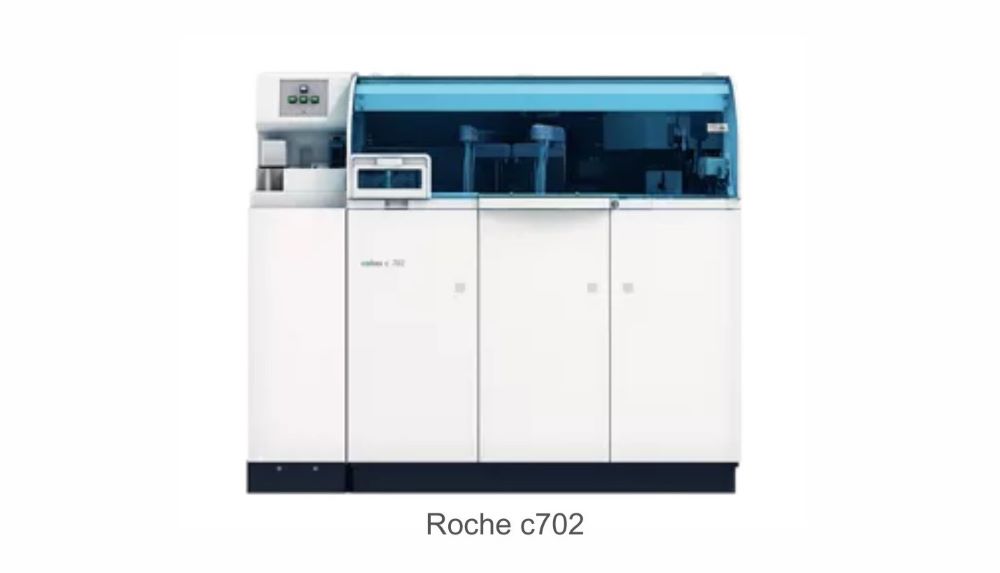
Manufactured by Toshiba and acquired by Canon, the Abbott Alnity c stands as a testament to innovation and efficiency in biochemistry analysis. Diverging from its predecessor, the Abbott c8000, the Alnity c combines a compact design with heightened throughput capabilities. Noteworthy is the reduction of its volume by half while concurrently improving processing speed. Abbott's design ingenuity is apparent in the integration of the reaction disc and reagent disc into a vertical structure, resulting in a substantial reduction of the overall footprint.
Unlike traditional stirring rods, Abbott Alnity c employs piezoelectric stirring, boosting efficiency and slashing the stirring time to an impressive 0.6 seconds. This deliberate design choice underlines Abbott's commitment to not only space optimization but also operational speed.
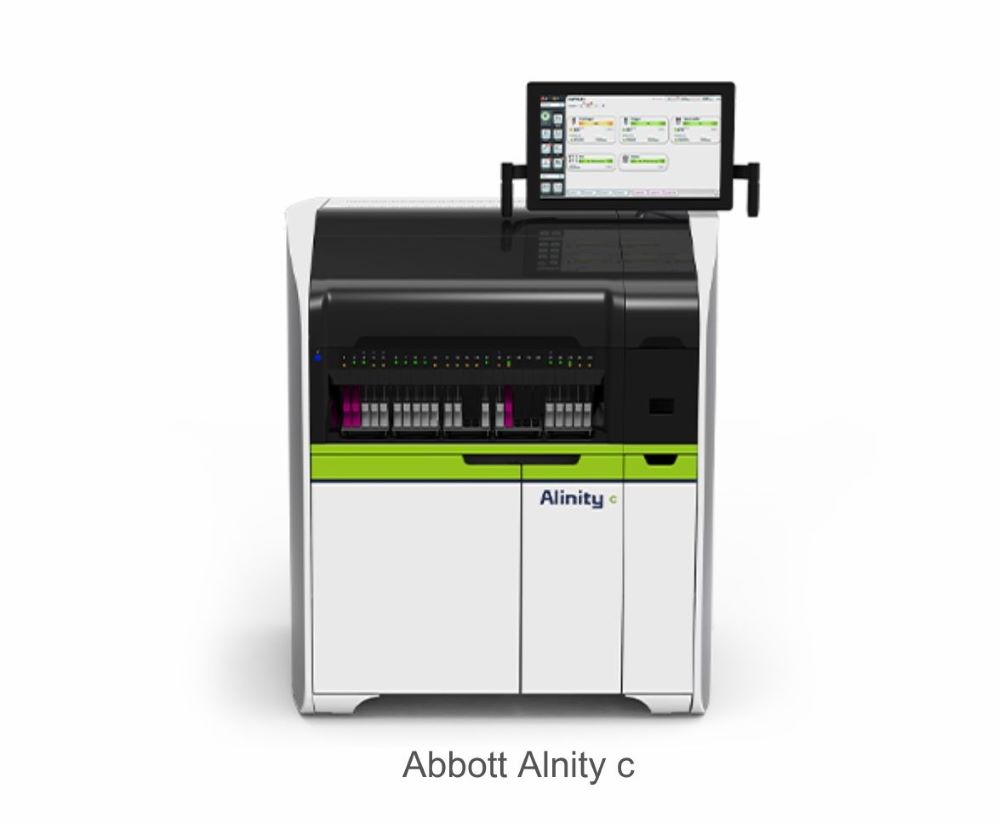
The AU5800 from Beckman Coulter has earned its status as a classic, maintaining a consistently high market share and a stellar reputation for stability and performance. Key features include a medium-based, non-contact, dry incubation system with meticulous temperature control. The patented stirrer cleaning platform enhances instrument efficiency, while the permanent maintenance-free reaction color cups provide optical transparency, low protein adsorption, and suitability for optical detection.
In essence, the AU5800 encapsulates the reliability and enduring performance sought after by laboratories of medium to large scale.
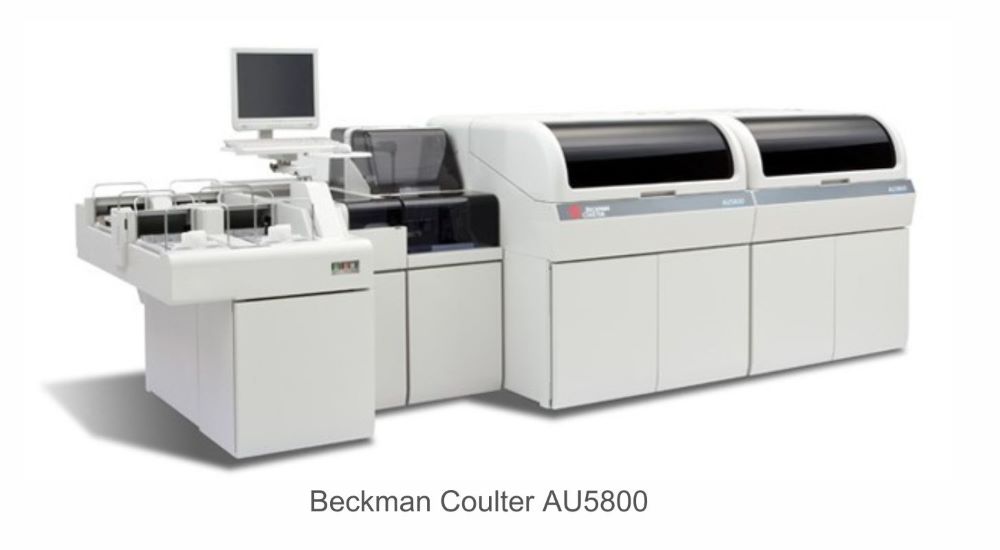
Introduced by Siemens in 2017, the Atellica CH930 is a testament to the convergence of technological prowess and financial backing. Leveraging ADVIA's microvolume addition technology, it introduces a unique reagent system and a magnetic suspension track system. The latter facilitates faster sample transport, augmented by dual-directional magnetic tracks. Siemens' commitment to innovation is evident in the thoughtful integration of cutting-edge features within the Atellica CH930.
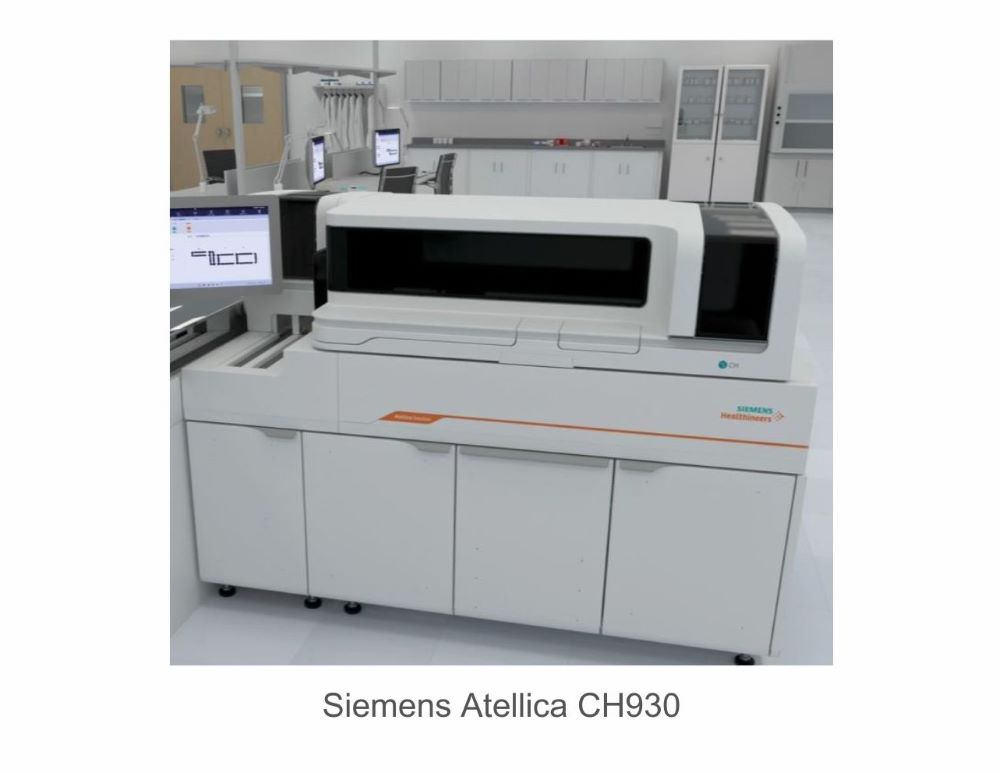
As an OEM manufacturer for Roche, Hitachi's LST 008AS series seamlessly combines tradition and innovation in biochemical analysis. Inheriting classic technology, Hitachi iterates with modern features, including ultrasound stirring, a complementary reagent system, and MTS clot detection technology. The incorporation of Matthias clot detection technology monitors pressure changes during sample aspiration, preventing clot formation and ensuring the integrity of results.
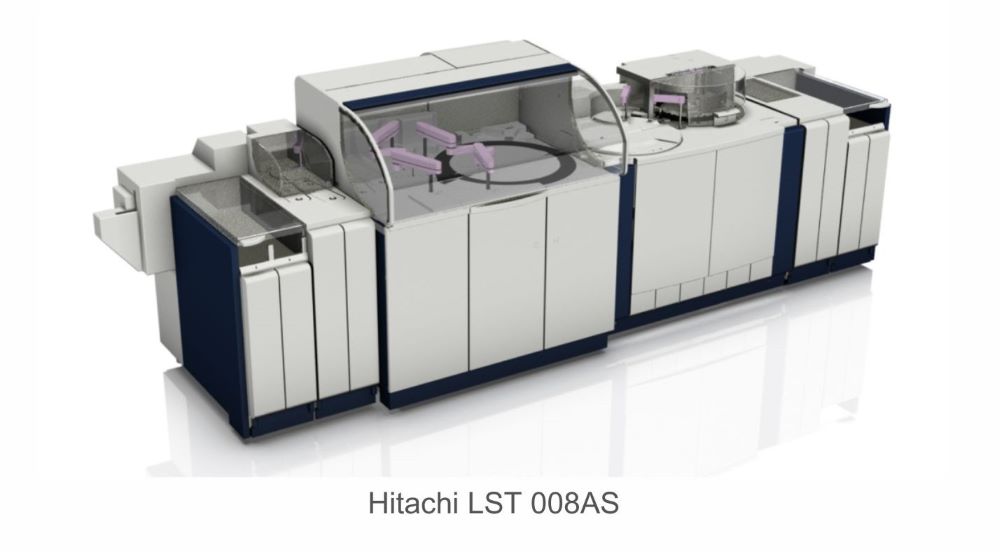
Building on the success of the BS-2000M, Mindray introduces the BS-2800M in 2021, marked by high-throughput emergency solutions and a precision detection system. Notable innovations include the U-Sonicwash ultrasonic cleaning technology, ensuring efficient cleaning for sustained accuracy. The user-friendly interface with touchscreen controls enhances user experience and accessibility.
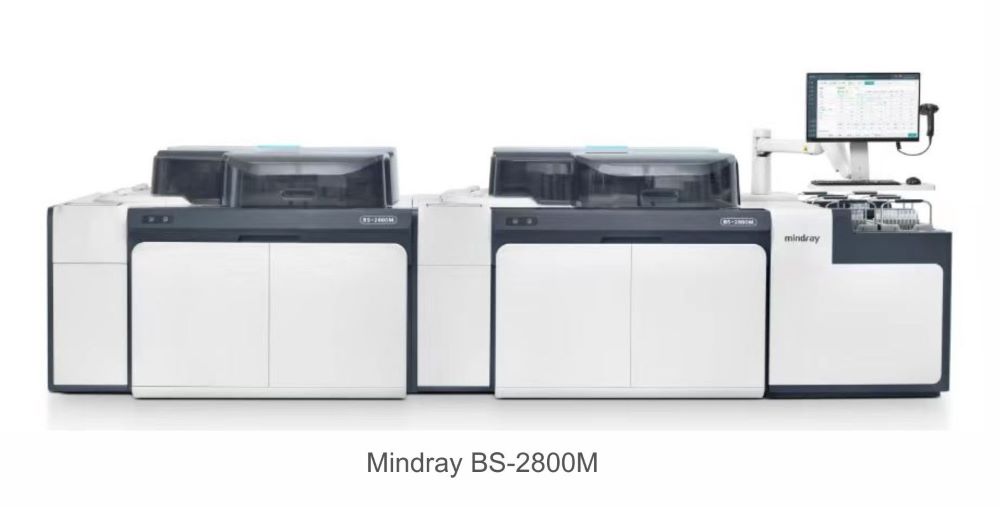
|
Analyzer |
Key Features |
|
Roche c702 |
- Unique 2000-speed loading/unloading function |
|
|
- Ultrasonic mixing for thorough solution oscillation |
|
|
- Intelligent four-track system in cobas 8000 for efficient sample transportation |
|
|
- Compatibility with Roche's immune analysis technology for a comprehensive system |
|
Abbott Alnity c |
- Compact size with improved speed |
|
|
- Integration of reaction and reagent discs in a vertical structure, reducing footprint |
|
|
- Utilization of piezoelectric stirring for enhanced efficiency (0.6 seconds stirring time) |
|
Beckman Coulter AU5800 |
- Large-scale analyzer with stable performance |
|
|
- Medium-based, non-contact, dry incubation system |
|
|
- Patented stirrer cleaning platform for improved instrument efficiency |
|
|
- Maintenance-free reaction color cups with excellent optical transparency |
|
Siemens Atellica CH930 |
- ADVIA's microvolume addition technology |
|
|
- Unique reagent system |
|
|
- Magnetic suspension track system for faster sample transport and dual-directional magnetic tracks |
|
Hitachi LST 008AS |
- Ultrasound stirring |
|
|
- Complementary reagent system |
|
|
- MTS (Matthias) clot detection technology for monitoring pressure changes during sample aspiration |
|
Mindray BS-2800M |
- High-throughput emergency solution |
|
|
- U-Sonicwash ultrasonic cleaning technology |
|
|
- User-friendly interface with touchscreen controls |
These six high-performance biochemistry analyzers represent the pinnacle of biochemical analysis for medium to large laboratories. Each instrument brings a unique blend of innovation, efficiency, and precision, catering to the dynamic needs of modern laboratory environments. Beyond these options, for smaller clinics or emergency settings, the Seamaty SD1, a compact POCT biochemistry analyzer, offers a swift and portable solution, showcasing the diverse landscape of biochemical analysis technology. In selecting the right biochemistry analyzer, laboratories not only make a choice but invest in the seamless functioning and progress of medical diagnostics.
Recommended further reading:
1. Top 9 Clinical Chemistry Analyzers for Small to Mid-Sized Laboratories in 2023
2. Buying Guide of Affordable Chemistry Analyzers in 2023
3. Automatic Biochemistry Analyzers: Principles, Applications, Brands, and Buying Guide
4. Top 8 Blood Gas and Electrolyte Analyzers in 2024: Brands, Features, Prices
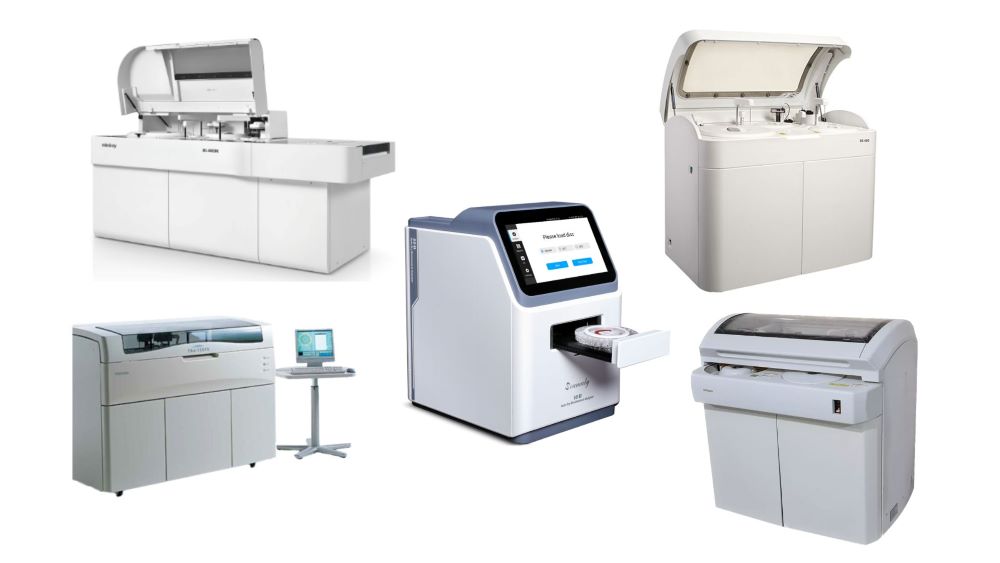
2024-06-20
Explore automatic biochemistry analyzers: advanced instruments revolutionizing healthcare diagnostics. Discover their principles, applications, top brands, and key considerations in choosing the right analyzer for efficient healthcare solutions.

2023-09-08
Explore the 2024 landscape of Point of Care Testing (POCT) with insights on trends shaping healthcare diagnostics. Discover the shift toward specialized clinical departments, tailored product designs, disease-specific testing panels, and the importance of academic promotion. Stay ahead in the evolving world of POCT products.

2022-03-29
The main purpose of animal testing of medical devices is to study the safety of medical devices. Often the subject of animal testing in medical research may be a new diagnostic method and principle, or the mechanism of action of a new drug, etc.